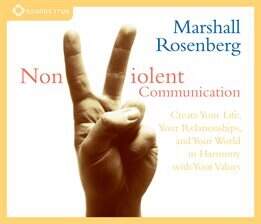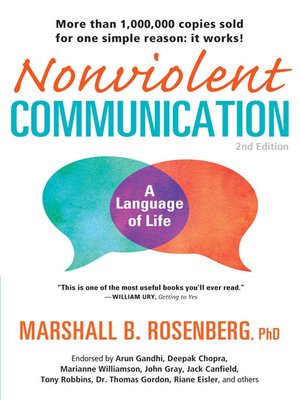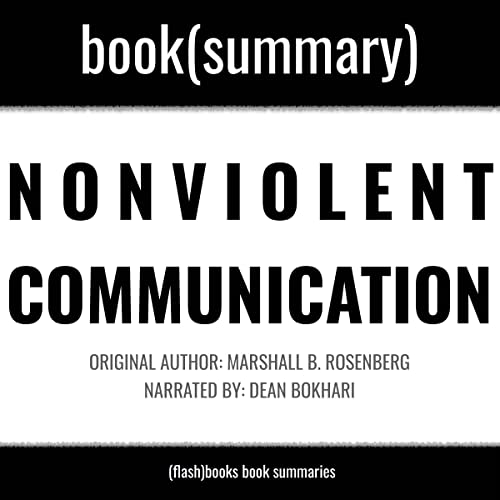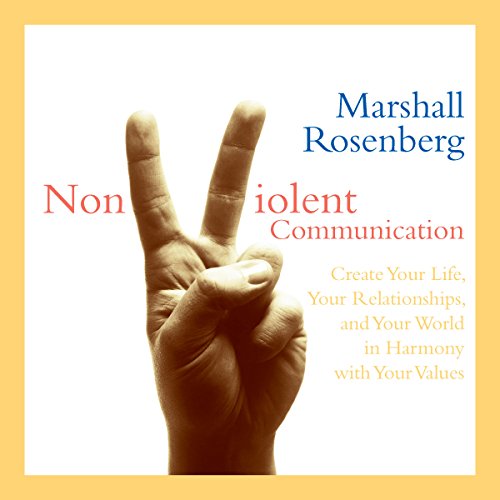Marshall B. Rosenberg’s “Nonviolent Communication” audiobook teaches compassionate communication. It helps listeners resolve conflicts peacefully and improve relationships.
Marshall B. Rosenberg’s “Nonviolent Communication” audiobook provides practical tools for effective communication. It emphasizes understanding others’ needs and expressing yourself honestly. This method fosters empathy, reducing misunderstandings and conflicts. The audiobook guides you through real-life scenarios, making it easy to apply the techniques.
By practicing nonviolent communication, you can enhance personal and professional relationships. It’s an invaluable resource for anyone seeking to improve their communication skills. Whether you’re dealing with family, colleagues, or friends, this audiobook offers insights to create more harmonious interactions. Listen and transform the way you communicate.

Credit: www.hoopladigital.com
Introduction To Marshall B. Rosenberg And Nonviolent Communication
Marshall B. Rosenberg was a renowned psychologist. He developed a powerful communication process called Nonviolent Communication (NVC). This process helps people connect with others more compassionately. The Nonviolent Communication Audiobook brings his teachings to life.
Early Life And Inspirations
Marshall B. Rosenberg was born in Canton, Ohio. His early life was filled with challenges. He faced bullying and discrimination. These experiences shaped his views on communication. He wanted to understand why people hurt each other. This quest led him to study psychology.
He attended the University of Wisconsin. There, he earned his Ph.D. in Clinical Psychology. He was deeply inspired by Carl Rogers, a pioneer in humanistic psychology. Rogers’ work influenced Rosenberg’s ideas on empathy and connection.
The Birth Of Nonviolent Communication
In the 1960s, Rosenberg started developing Nonviolent Communication. He observed that conflicts arise from unmet needs. He believed that people can resolve conflicts by expressing their needs clearly.
- Observation: State what you observe without judgment.
- Feelings: Express your feelings about the observation.
- Needs: Identify the needs connected to your feelings.
- Requests: Make a clear request to address your needs.
Rosenberg’s method focuses on empathetic listening and honest expression. It encourages people to connect with their own needs and the needs of others. The Nonviolent Communication Audiobook provides practical examples and exercises.
| Principle | Description |
|---|---|
| Observation | State facts without adding judgments. |
| Feelings | Share your emotions linked to the observation. |
| Needs | Identify the universal needs behind your feelings. |
| Requests | Ask for specific actions to meet your needs. |

Credit: www.overdrive.com
Core Principles Of Nonviolent Communication
Marshall B. Rosenberg’s Nonviolent Communication Audiobook teaches essential skills. These skills help improve your communication. The core principles of NVC guide you in understanding yourself and others. These principles include Observation vs. Evaluation, Feelings and Needs, and Request vs. Demand.
Observation Vs. Evaluation
In NVC, observation means seeing what actually happened. It is like being a detective. You describe without adding your opinion. Evaluation, on the other hand, adds your thoughts and judgments. For example:
| Observation | Evaluation |
|---|---|
| She spoke loudly. | She was rude. |
| He arrived late. | He doesn’t care. |
Feelings And Needs
NVC encourages you to express your feelings clearly. Feelings are about your emotions. They are not thoughts. For example:
- Happy
- Sad
- Angry
Next, identify your needs. Needs are what you must have to be happy. For example:
- Safety
- Love
- Respect
Expressing your feelings and needs helps others understand you better.
Request Vs. Demand
In NVC, a request asks for something without pressure. A demand forces someone to act. For example:
- Request: “Can you help me with this task?”
- Demand: “You must help me now.”
A request gives the other person a choice. A demand takes away that choice.
Impact And Applications
The Nonviolent Communication Audiobook by Marshall B. Rosenberg has far-reaching impacts. It offers valuable tools for improving communication in various settings. These tools help individuals express themselves clearly and empathetically.
In Personal Relationships
Nonviolent Communication (NVC) strengthens personal relationships. It promotes understanding and empathy. Couples find it easier to express their needs without conflict. Families use NVC to resolve issues calmly. It helps in creating a loving and supportive environment.
- Improves emotional connection
- Reduces misunderstandings
- Fosters mutual respect
In Education
NVC is a powerful tool in education. Teachers and students communicate better. It creates a safe and supportive classroom environment. NVC encourages active listening and empathy. This enhances the overall learning experience.
- Enhances student-teacher relationships
- Promotes a positive classroom atmosphere
- Encourages collaborative learning
In Conflict Resolution
Nonviolent Communication is essential in resolving conflicts. It helps parties understand each other’s needs. This method creates a peaceful way to solve disputes. It is used in workplaces, communities, and even international relations.
- Encourages peaceful dialogue
- Helps identify underlying needs
- Facilitates mutual understanding

Credit: www.audible.com
Conclusion
Marshall B. Rosenberg’s Nonviolent Communication audiobook offers transformative insights. It teaches effective communication and empathy. Embrace these principles to improve relationships and foster understanding. Dive into this audiobook for a more compassionate approach to interactions. Enhance your communication skills and create positive connections with Rosenberg’s timeless wisdom.



